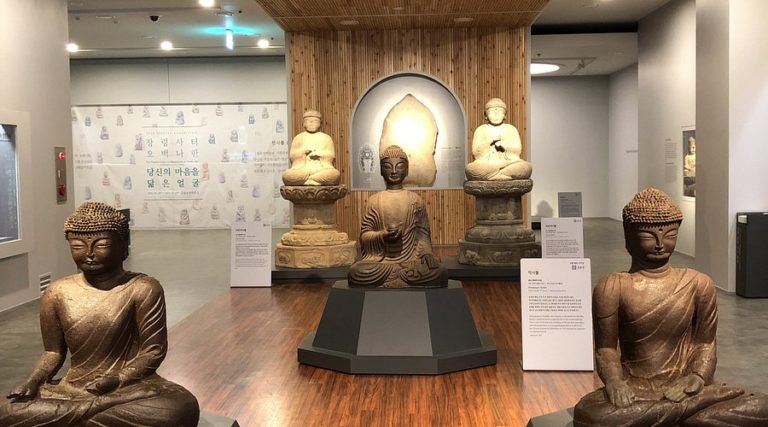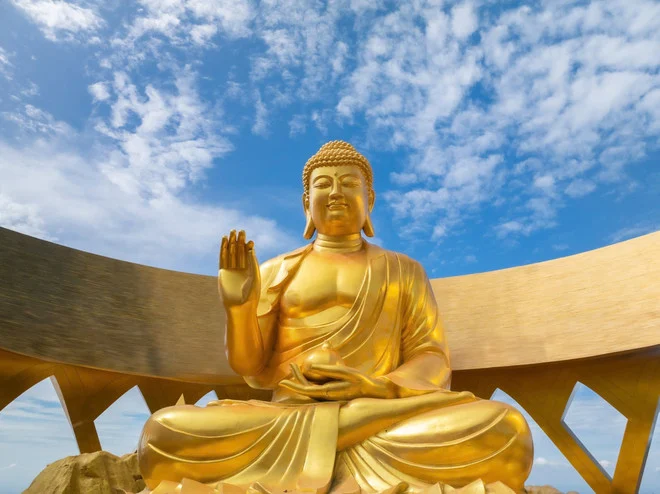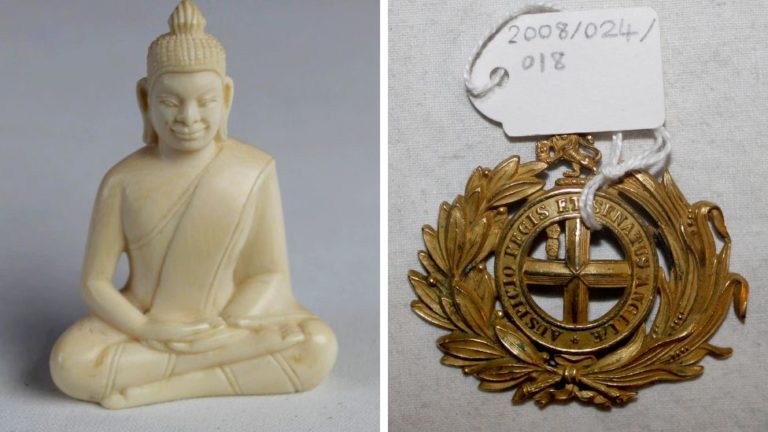The multi-headed Avalokiteshvara comes in many forms, including female deities such as Guanyin from China, and marks a time when Buddhism was the religion of tradespeople

From Ajanta Cave 1 in Aurangabad district, Maharashtra, comes the famous mural of a rather delicate-looking Avalokiteshvara Padmapani, a bodhisattva who holds a lotus flower in his hand and tilts his head to the side, as if trying to hear the cries of people in distress. More elaborate stone images of the lotus-bearing deity are in nearby Ellora Cave 7, or in Cave 90 of the Kanheri Caves in the western suburbs of Mumbai. At both these locations, he is surrounded by images of distress: fire, theft, demons, elephants, lions, snakes, monkeys and shipwreck. These are the eight great perils (ashta-maha-bhaya) that Avalokiteshvara rescued merchants from, making him a popular deity from around the 6th century CE, in almost all denominations of Buddhism.
The idea of the bodhisattva, the one who delays his liberation until he rescues all the afflicted people of the world, probably originated in Gandhara, around the 3rd century CE. The lotus-bearing Padmapani was often paired with the more fierce looking, weapon-bearing Vajrapani, guardian of the Buddha. If Padmapani granted prosperity to end suffering, Vajrapani granted security. This way of thinking was very different from the original tenets of Buddhism. Originally, Buddha emphasised outgrowing desire itself to end suffering. This bodhisattva, however, indulged that desire, until people were ready to take the tougher path. Inasmuch as this, he showed more compassion than contemplation.
By the 6th century CE, the image of the lotus-bearing one spread to South India, and from there to Southeast Asia, where he became renowned as the saviour god of Buddhist merchants. Strictly speaking, Avalokiteshvara is a deity of the later Mahayana school of Buddhism. However, he was popular across all schools of Buddhism owing to his compassionate and helpful nature. With his multiple heads and arms, it was easy to identify this formidable being.
The story goes that Avalokiteshvara was so pained by the sorrow of people that his head burst into 11 pieces. The Buddha turned each piece into a head in itself. Thus Avalokiteshvara came to have 11 heads. The oldest stone expression of this is found in the Kanheri Caves. This happened 1,400 years ago indicating shifts in Buddhism, mirroring shifts in trading patterns.
Buddhism has mainly been a religion of merchants, who travelled across vast networks of trade routes in South Asia and beyond. That is why Buddhist sites are located at spots where merchants would halt to rest, to pray and even to strike business deals. The earliest Buddhist sites in Bharhut, Sanchi, even Mathura and Gandhara, are along trade routes stretching from the Ganga river valley to the north, i.e., the Himalayas (Uttara-patha), and to the south, i.e., the Vindhyas (Dakshin-patha).
Before the 5th century, India had trade relations with Rome: Roman coins and artefacts have been found on the western coast. After the 5th century, trade expanded to Southeast Asia. Ships from West Asia, taking advantage of the monsoon winds, sailed to ports such as Sopara near Mumbai and Muziris in Kerala. From here, goods were transported over the Western Ghats through the Naneghat pass, and then along the Godavari river to the Godavari delta on the eastern coast. Once here, ships would travel to Java, and from there to Cambodia and finally, China. They would avoid going around the southern tip of India due to the barrier of the Rama Setu. It was safer to travel over land across peninsular India using bullock carts and elephants. But this journey too was fraught with dangers and obstacles, and hence, the need for a saviour god.
Older Buddhist sites show stories of Buddha and his previous lives on panels in stupas. Buddha is either aniconic or shown seated, with arms on his lap. Later images show bodhisattvas with many heads and many arms, that hear and help an infinite number of beings. Sometimes, Avalokiteshvara carries the image of Buddha on his head. This is not Gautama Buddha of the older Buddhism, but Amitabha Buddha of the newer Mahayana Buddhism that spoke of many Buddhas existing in different heavens, surrounded by their own bodhisattvas.
In Kanheri and Ellora, Avalokiteshvara sometimes has a female deity called Tara by his side, who also holds a lotus flower. This is the first time a female form is acknowledged as divine in the Buddhist realm. This inclusion happens over a 1,000 years after the Buddha’s time. Some say Tara is the consort of Avalokiteshvara. But in many places, she becomes his female form.
To the east, in Odisha, at the Ratnagiri monastery on the banks of the Mahanadi, there is an 8th century image of Tara standing alone surrounded by the eight great perils, saving those who call out to her. Her cult would eventually spread from Odisha to Tibet, via Bengal. In China, Avalokiteshvara is worshipped as a goddess called Guanyin. Even today, the Chinese write letters asking her to help them solve problems.
The author is author of 50 books on mythology, art and culture. Devdutt Pattanaik




